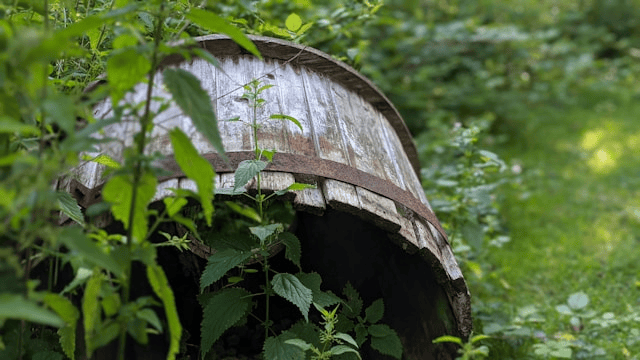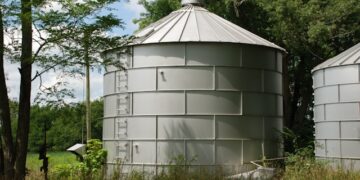As summer temperatures rise, so does water usage. Between watering gardens, cleaning outdoor spaces, and keeping lawns green, households often see a noticeable increase in their water bills during the warmer months. But what if there was a way to offset that cost and help the environment at the same time? Installing a rain barrel is a simple, effective, and affordable solution that allows you to collect and reuse rainwater for a variety of non-potable needs.
Whether you’re an experienced DIYer or just beginning your sustainability journey, a rain barrel can be a great addition to your home. It’s one of the smartest ways to save water in summer while supporting your garden and reducing strain on municipal systems.
What is a Rain Barrel and How Does it Work?
A rain barrel is a container designed to collect and store rainwater runoff, typically from rooftops via downspouts. When it rains, water flows from your roof into gutters, down through spouts, and when a barrel is installed into a secure, sealable tank. This water can later be used for various purposes around your home.
Rain barrels come in many shapes and sizes. Some are basic, repurposed food-grade drums, while others are decorative, ready-made containers you can buy at home improvement stores. For those looking to tackle a rain barrel DIY project, it’s also easy to build one yourself with simple tools and materials.
Benefits of Using a Rain Barrel
There are several compelling reasons to install a rain barrel this summer:
1. Save Money on Your Water Bill
One of the most immediate benefits is cost savings. Using collected rainwater for gardening, washing vehicles, or cleaning outdoor spaces means you’re using less tap water reducing your utility bill significantly.
2. Conserve Fresh Water
Rainwater is naturally soft and free of chlorine, making it excellent for plants. By capturing this free resource, you’re helping to conserve a vital natural supply that’s becoming more strained each year.
3. Reduce Stormwater Runoff
Installing a rain barrel helps reduce the volume of runoff that carries pollutants into local waterways. This can lower the risk of erosion, flooding, and contamination in your area.
4. Support Garden Water Conservation
Plants love rainwater, and using it keeps your garden thriving without draining municipal systems. If you love gardening, this is one of the easiest ways to support eco-friendly practices at home.
Is a Rain Barrel Right for Your Home?
Before diving into installation, you’ll want to determine if a rain barrel setup is feasible and effective for your property.
-
Roof and Gutter Type: A sloped roof with clean, accessible gutters is ideal. Asphalt shingles are most common, but make sure your roofing materials don’t leach harmful chemicals.
-
Downspout Access: You need a downspout to direct water into your barrel. Check its location and proximity to a stable, level surface.
-
Local Regulations: Some cities or states have guidelines around rainwater harvesting. Always check with local authorities before you begin.
-
Climate: Areas with regular summer rains will benefit the most. If you’re in a drought-prone region, you may still find value during seasonal storms.
Materials and Tools You’ll Need
If you’re ready to start your rain barrel DIY project, gather these essential materials:
Materials:
-
Rain barrel or food-grade drum (50–80 gallons is common)
-
Downspout diverter or flexible elbow
-
Spigot or faucet
-
Mesh screen or lid (to keep out debris and mosquitoes)
-
Overflow hose or pipe
-
Cinder blocks or a stand (to elevate the barrel)
Tools:
-
Drill with hole saw attachment
-
Wrench or pliers
-
Tape measure
-
Hacksaw (for cutting downspouts, if needed)
-
Waterproof sealant or caulk
Guide to Installing a Rain Barrel
1. Choose the Right Location
Pick a spot near a downspout and close to where you’ll use the water (like your garden or backyard). The ground should be level and stable.
2. Create a Stable Base
Elevate the rain barrel on cinder blocks or a wood platform. This improves water pressure and makes it easier to fill watering cans.
3. Prepare the Barrel
Drill a hole near the bottom of the barrel for the spigot. Install the spigot tightly and use sealant to prevent leaks. Then cut a hole in the top or side for the downspout input and cover all openings with mesh.
4. Modify the Downspout
Cut the downspout just above the top of the barrel and install a diverter or flexible elbow to guide water into the barrel. Ensure any overflow will drain safely away from your home’s foundation.
5. Connect Overflow Pipe
Drill a second hole near the top for overflow and attach a hose or pipe to direct excess water safely.
6. Test the System
Run water through the gutter to ensure it’s flowing into the barrel. Check all connections for leaks.
How to Use the Collected Rainwater
Once your barrel is in place, you can use the water in many helpful ways:
-
Garden and Lawn Watering: Ideal for vegetables, flower beds, and lawns.
-
Outdoor Cleaning: Use it for washing patios, windows, or outdoor furniture.
-
Car Washing: It’s soft and won’t leave hard water spots.
Important: This water is not treated and should not be used for drinking, cooking, or bathing unless properly filtered and disinfected.
Maintenance Tips
To keep your system safe and efficient all summer long, follow these tips:
-
Keep it Covered: Use a lid or mesh screen to block debris and prevent mosquitoes from breeding.
-
Clean Regularly: Rinse out the barrel every few months and clean the screen as needed.
-
Check for Leaks: Inspect spigots and connections periodically.
-
Winterize: In colder climates, drain and disconnect the barrel before winter to prevent freezing and cracking.
Conclusion
Installing a rain barrel is a simple yet powerful way to make your home more sustainable. You’ll save water, cut costs, and support healthier plants all with minimal effort. Whether you go with a store-bought system or dive into a rain barrel DIY project, the benefits are clear.









